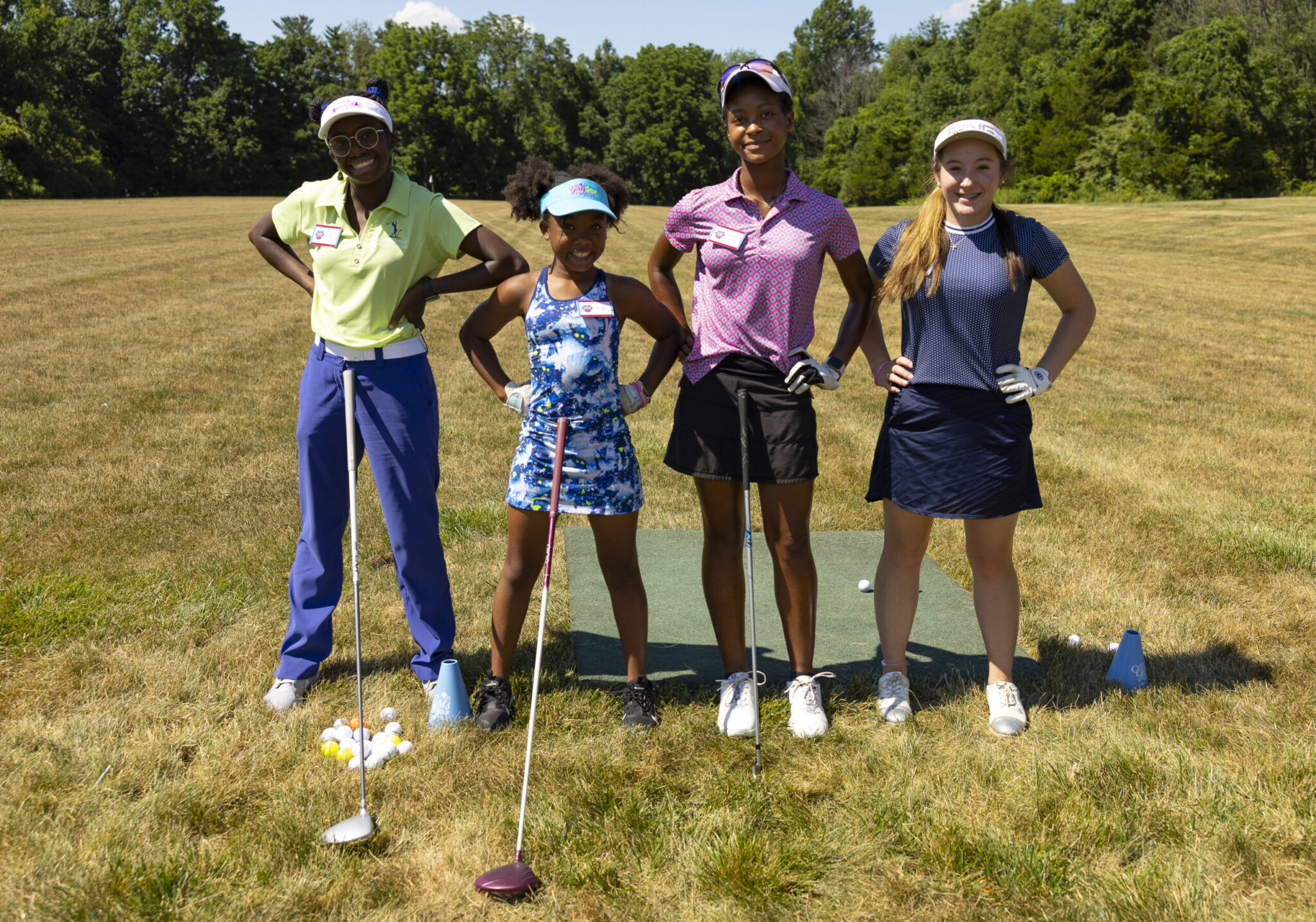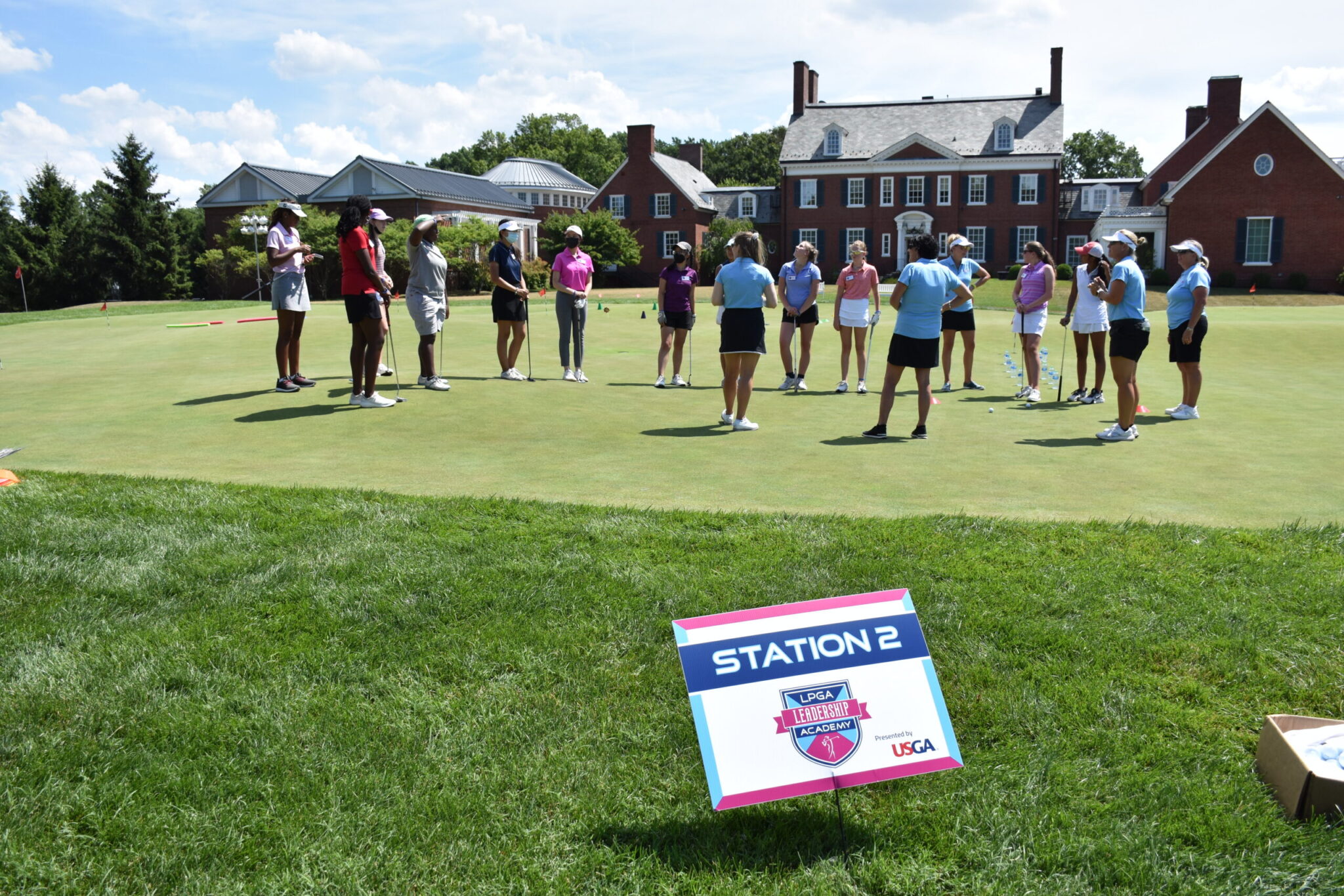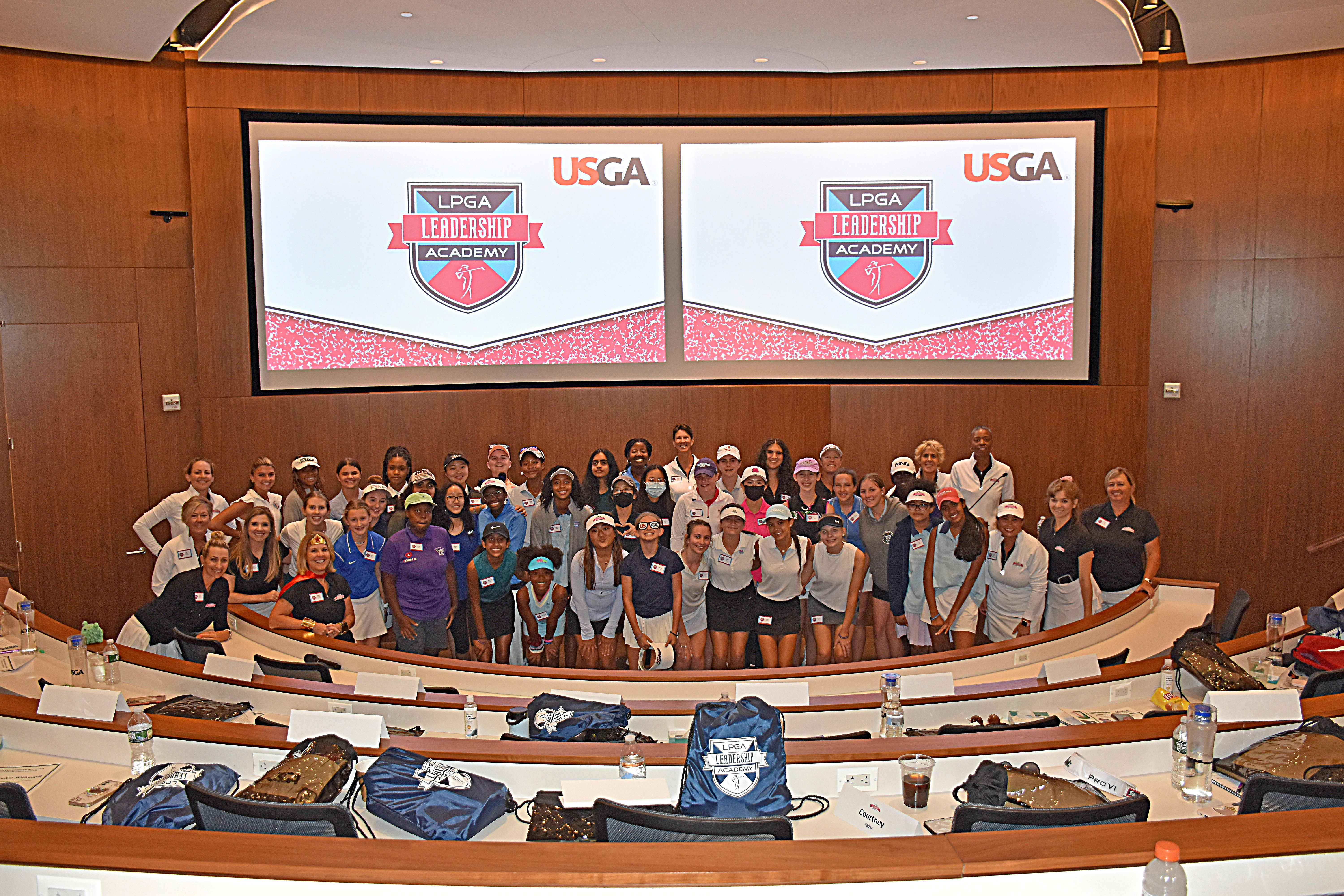For over 125 years, the United States Golf Association (USGA) has strengthened the foundation of the game by creating endless avenues for people of all backgrounds to enjoy it. In fact, this notion is what led Judy Bell, the first female President of the USGA, to use grant dollars in 1996 to support the LPGA Girls Golf Club.
At the time, the LPGA Girls Golf Club was a grassroots program with a few chapters in place. These chapters sought to teach girls the game in a fun and safe environment. Seeing the value in this program, the USGA went all in, and it was renamed to LPGA*USGA Girls Golf in 1997.
The financial support over the years from the USGA to Girls Golf exceeds $8 million and their guidance has helped Girls Golf to scale at a level many never could have imagined. As of 2023, the program has impacted one million girls and boasts more than 550 sites globally.

Participants show off their power pose on the driving range during the LPGA Leadership Academy presented by the USGA at USGA headquarters in Far Hills, NJ on Wednesday, July 13, 2022. (Copyright USGA/Jason E. Miczek)
“What started as a program that focused on providing resources for introductory on-course instruction in a safe, welcoming environment has evolved into a well-rounded initiative that empowers girls through golf, teaching valuable life skills that grow confidence as much as energy,” said Susan Pikitch, Chief Financial Officer of the USGA and current Chair of the LPGA Foundation Board. “As LPGA*USGA Girls Golf celebrates the incredible milestone of one million participants, we see it as an opportunity to dig in deeper and bring greater awareness toward our valuable partnership.”
The proof is in the numbers: more girls and women are playing golf than any time in history – and those numbers continue to grow. According to the National Golf Foundation in 2024, females represented one-quarter of all golfers – matching an all-time high – with girls representing even higher among the junior ranks with 38%. Girls under 18 are currently the fastest growing segment of the golfing population as well. This growth also extends to girls of color, with 28% of junior participants being non-Caucasian.
“As a leader in golf, we see it as our responsibility to advance the game and ensure it’s open and welcoming to all, which will ensure it remains thriving for generations to come,” Pikitch explained. Programs like Girls Golf have helped propel this advancement and are critical to getting more clubs into young girls’ hands and providing an accessible opportunity to play.

In support of Girls Golf, the USGA has dedicated its funding in recent years towards strengthening chapter activation, especially in expanding programming in new communities, and building advanced education tools. These efforts have helped the program grow not just within the United States, but internationally. Currently, there are sites in countries including Mexico, Chile, and Korea.
The USGA has also played a key role in developing future leaders by mentoring teens each year through an LPGA Leadership Academy at the company’s headquarters in New Jersey. The academy offers girls the opportunity to learn from executives and to experience the history of the game by touring the USGA golf museum.
“The original partnership has provided so much more than its original intent. It’s opened the door for more women to work in golf, use it as a business tool, grow their network and confidently play a sport on an equal playing field,” Pikitch said. “Not only are we developing leaders, but it has also opened the door for many women to play competitively – from serving as the first females on their high school teams to earning college scholarships, competing on the LPGA Tour and becoming USGA champions.
“But I’m eager to see how Girls Golf alumnae and today’s participants transfer the life skills they’ve learned and apply those valuable lessons as they become leaders in the classroom, within the golf industry and beyond.”

Speaking of alumnae, more than 90 former Girls Golf participants are competing on the LPGA and Epson tours, many of whom are also regularly playing in the USGA’s Open and amateur national championships. This includes the likes of Alison Lee, Mariah Stackhouse, Cheyenne Woods and Major champions Brittany Lincicome and Morgan Pressel. These players are certainly proof of what girls can achieve if given the proper support, but they remain just a small percentage of the million girls who have benefited from the program and found success elsewhere in life.
“Reaching one million girls in LPGA-USGA Girls Golf is a testament to the power of partnership and the invaluable support of the USGA,” said LPGA Foundation President Nancy Henderson. “Together, we’ve opened doors and opportunities for countless young girls, and this achievement is a testament to our shared dedication to growing the game of golf.”
As Henderson explained, the women’s game is bigger than ever thanks to the USGA, but there’s still plenty of work to be done.
“Reaching the next million girls starts with making sure that LPGA*USGA Girls Golf is accessible for underserved populations, in particular, girls in big cities and rural areas,” Pikitch explained. “That will take further investment and more people, but it can absolutely be achieved. Girls Golf has already made a large effort to focus on welcoming more Black and Latina participants, which is having an impact.”
“Beyond reaching more people, we need to make sure that the programming and activities in clinics remain relevant and interesting. As we’ve seen, each generation brings with it new expectations. We should look at our technology and teaching methods to ensure they are meeting these girls’ needs and adjust if necessary. No long-standing successful program can ever rest on its laurels and past successes; it needs to continuously improve and evolve to reach the next benchmark.”

Leave A Comment